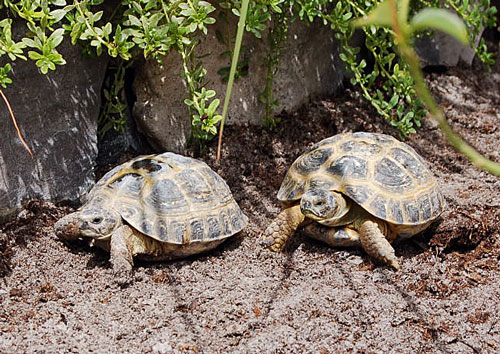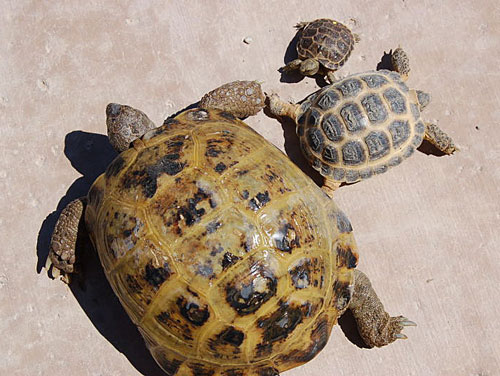Russian turtles, also known as Russian tortoises or Horsfield’s tortoises, are small and adorable reptiles that make wonderful pets. If you’re considering getting one, it’s important to understand how big they can get so you can provide them with the appropriate habitat and care.
Size and Growth Rate
On average, Russian turtles grow to a size of about 6-8 inches (15-20 cm) in length. However, some individuals can reach up to 10 inches (25 cm) in length. Males tend to be slightly larger than females, both in terms of size and weight.
The growth rate of Russian turtles is relatively slow compared to some other turtle species. They typically reach their adult size within 3-5 years. During the first few years of their lives, they experience the most significant growth.
Factors Affecting Size
Several factors can affect the size of Russian turtles:
- Genetics: Just like humans, turtles can inherit certain growth characteristics from their parents. Some Russian turtles may have a genetic disposition to grow larger than others.
- Diet: A well-balanced and nutritious diet plays a crucial role in the growth and development of Russian turtles. Feeding them a variety of leafy greens, vegetables, and occasional fruits will help ensure proper growth.
- Environment: Providing a suitable environment with ample space and appropriate temperatures is essential for healthy growth. Russian turtles thrive in dry habitats with plenty of hiding spots and basking areas.
- Health: Like any living creature, the overall health and well-being of Russian turtles can impact their growth. Ensuring they are free from parasites or diseases and providing regular veterinary check-ups is essential.
Comparing Russian Turtles to Other Turtle Species
While Russian turtles may not be the largest turtle species, they have their own unique charm. Here’s a comparison of their size to other commonly kept turtle species:
| Turtle Species | Average Size |
|---|---|
| Russian Turtle | 6-8 inches (15-20 cm) |
| Red-Eared Slider | 8-12 inches (20-30 cm) |
| Painted Turtle | 4-10 inches (10-25 cm) |
| Box Turtle | 4-8 inches (10-20 cm) |
As you can see, Russian turtles fall within the smaller size range compared to some other turtle species. However, their compact size makes them suitable for indoor enclosures and easier to handle.

Credit: russian-tortoise.com
Providing the Right Habitat
Creating a suitable habitat for your Russian turtle is essential for their growth and well-being. Here are some key elements to consider:
- Enclosure size: Provide ample space for your turtle to move around comfortably. A general rule of thumb is to have at least 10 square feet of space for each turtle.
- Temperature: Maintain a temperature gradient in the enclosure, with a basking spot between 90-95°F (32-35°C) and a cooler area around 75-80°F (24-27°C).
- Lighting: Use UVB lighting to provide your turtle with the necessary ultraviolet light for calcium metabolism and overall health.
- Substrate: Choose a substrate that allows for burrowing, such as a mix of topsoil and sand.
Remember to regularly clean the enclosure and provide fresh water for your Russian turtle. A clean and stress-free environment is crucial for their growth and longevity.

Credit: reptilesmagazine.com
In Conclusion
Russian turtles generally reach a size of 6-8 inches (15-20 cm) in length, with males being slightly larger than females. Their growth rate is relatively slow, with individuals reaching their adult size within 3-5 years. Factors such as genetics, diet, environment, and overall health can impact their size. Providing the right habitat and care ensures the well-being and proper growth of these charming reptiles.





Leave a Reply